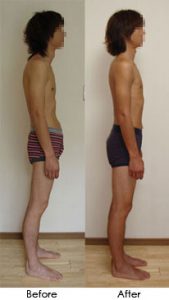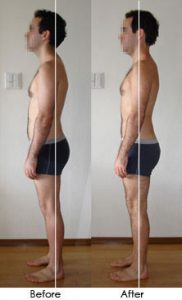What is commonly referred to as Rolfing is actually a form of Structural Integration. Rolfing is a trademark owned by the Rolf Institute in Boulder, Colorado. Nevertheless, all forms of Structural Integration have their roots in Dr. Ida Rolf’s work. It is also less known that there are two aspects to Rolfing, namely the structural work and the movement work. The word Rolfing is usually used to refer to the structural aspect of the work.
 Rolfing is a system of manual manipulation and movement education that helps to organize the body in gravity. Gravity works to keep us upright with ease and grace if we have a well-organized structure, but works against us in a misaligned body. Through manipulating the myofascial system or the connective tissue of the body, a Rolfer™ tries to release myofascial holding and then integrate the body in its best possible alignment given all the resources available at the time. When structure is well-aligned, space is created inside the body, eliminating compression and unnecessary stress on our viscera.
Rolfing is a system of manual manipulation and movement education that helps to organize the body in gravity. Gravity works to keep us upright with ease and grace if we have a well-organized structure, but works against us in a misaligned body. Through manipulating the myofascial system or the connective tissue of the body, a Rolfer™ tries to release myofascial holding and then integrate the body in its best possible alignment given all the resources available at the time. When structure is well-aligned, space is created inside the body, eliminating compression and unnecessary stress on our viscera.
In addition to the structural work, movement education is essential in ensuring long-lasting results. To truly embody a system of work and own it, it is crucial to be engaged in the process itself. Bringing awareness to how we carry and use our body helps us to make the right choices in our everyday posture and movement. A Rolfer can help to align our structure, but without body awareness, that alignment can be lost again over time as we default into our patterned and conditioned posture and movement under stress.
A Case in Point

 These two clients received ten structural Rolfing sessions and three Rolf Movement sessions. The result of our work together is shown in the AFTER photos.
These two clients received ten structural Rolfing sessions and three Rolf Movement sessions. The result of our work together is shown in the AFTER photos.
The postures in the BEFORE photos were where the clients felt familiar and comfortable before we started working together. This was where they said they felt most ease in their body. The client shown on the left came for Rolfing in the hope that it might improve his posture and alleviate the occasional backache and stiff shoulders from work, while the client shown below experienced lower back pain.
Since structural Rolfing stretches and lengthens fascia and changes the overall relationship of the various parts of the body, a client’s body can assume an improved posture after receiving Rolfing sessions. However, for the client to be able to truly embody and own a posture, he or she must feel that the new option is where he or she feels most ease, whether physically, emotionally or psychologically. Otherwise, the client is likely to return to the old place of “ease.” A shift must take place in the client’s perception of what ease means.
Our posture expresses not just our physical alignment in space, but is also an expression of our psychological, emotional, psychic and spiritual condition, i.e., an expression of the whole of us that is actually more than the sum of these aspects put together. It carries the meaning of our life. For example, the BEFORE photos evoke a certain felt sense in us when we allow ourselves to look and be affected by them. In the same way, the AFTER photos carry a different feel to them. We experience the person differently.
What is important for me as a Rolfer and therapist is not how different a client may look after a session or series. If the change is not embodied and meanings not redefined or refined, then the change will probably not last very long. I think that the highest potential of this work is reached if it can help us to deepen our awareness of who we are and how that is expressed so we can make life choices that come from a more conscious and free place in ourselves.



